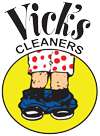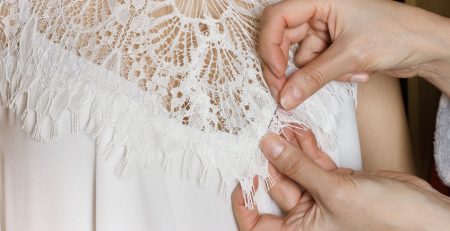How Does Dry Cleaning Work?
Did you know that dry cleaning actually isn’t dry at all? It’s true! Sure, there’s no water involved, but garments are washed with a cleaning fluid, which is a liquid. All garments are immersed and cleaned in a liquid solvent. It is only called “dry” cleaning because there is no water involved! So what actually happens when you take your clothes to the dry cleaners?
Since World War II ended, the volatile synthetic solvents carbon tetrachloride and trichloroethylene gave way to a product known as perchloroethylene or perc, which is the typical solvent choice for the dry cleaning industry.
When you drop your clothes off at the dry cleaners, they are first tagged to ensure that your clothes do not get mixed up with another customer’s. They are inspected for missing buttons, tears, etc. and made note of to prevent placing blame on the dry cleaners. To begin the cleaning process, the cleaner looks for stains and treats them to make removal easier. The clothes are then put in a machine and cleaned with solvent and any lingering stains are removed by post-spotting. To finish up, the clothes are pressed, folded, and packaged to be returned to their rightful owners.
Pre-Treatment
Pre-treating stains at the dry cleaners is very similar to the way you treat stains at home: applying a stain remover prior to washing. To help the process, try to catch your stains early. Apply water for wet stains and solvent for dry stains, which are stains that have grease or oil in them. Tap and blot both sides of the fabric with a cloth, rinse, and let dry. Your dry cleaner will do the rest!
Dry Cleaning Process
Your clothes rotate in a perforated basket with a constant flow of solvent from the pump and filter system. It is pumped continuously through the filter and re-circulated, free of dirt that gets trapped in the filter. The next cycle will drain and spin the clothes to expel the solvent, then circulates warm air through the clothes in a dry cycle. The remaining solvent is vaporized by warm air and then condensed over cooling coils. The distilled solvent is separated from any water that may have remained in the clothing or system and returned to the tank as distilled solvent.
Post-Spotting
Post-spotting uses professional equipment and chemical preparations using steam, water, air, and vacuum. If the stain was a wet stain, water or wet-side chemicals are used to remove it. If it was a dry stain, solvents or dry-side chemicals help to remove the stain.
Finishing
During the finishing process, steam is applied to soften the garment, it is reshaped through quick-drying, the steam is removed with air or vacuum, and then pressure is applied to the garment from the head of the pressing machine while steam is diffused through the bottom.
Vick’s Cleaners
Vick’s Cleaners is the oldest professional dry cleaners in North Carolina, proudly serving Kinston and surrounding areas for over 116 years. We provide quality dry cleaning and garment cleaning services, excellent customer service, and unmatched convenience. Contact us today!

